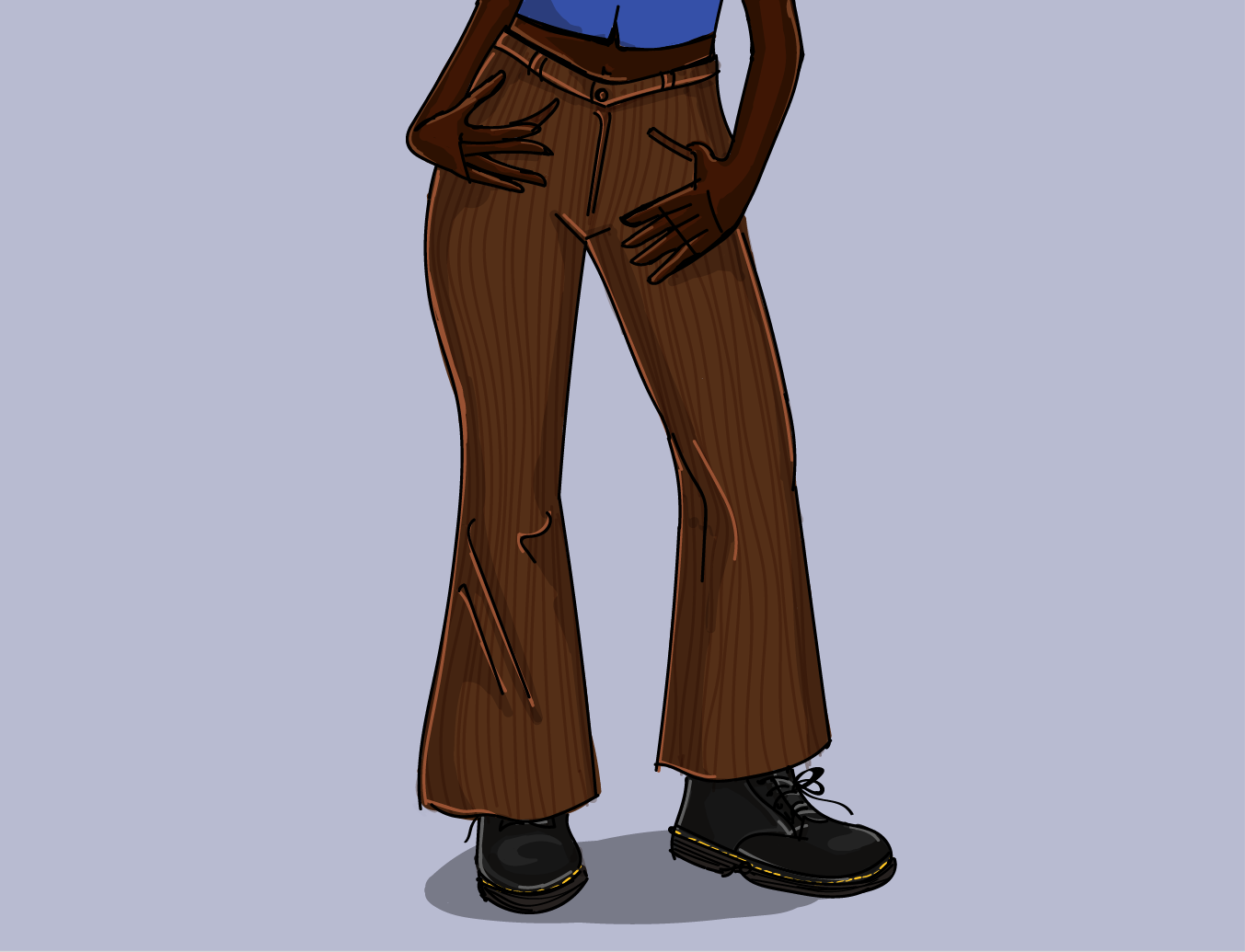[Written by Eilidh Akiladen(she/her)]
[Image Credits: Ella Ottersbach-Edwards (she/her)]
Content warning: Contains discussion of racial issues.
So, you’re fifteen. Post first vintage sale, you walk into the living room, hand-me-down Doc Martens trailing mud, wearing a faded bomber jacket and oversized corduroy shirt with straight leg jeans you’re not telling anyone are fromTopshop. Then, your progressive (had-cropped-bleached-hair-and-looked-cool-in-35mm-back-in-the-day) mum tells you, “Love, you look like a skinhead.” You’ve seen enough of Shane Meadows’ This Is England to know skinheads are edgy and you for sure fancy Lol, but, their racist links in the 70s and 80s make this a slight issue for you. That is, you with the (white-mum) enforced Vitamin D capsules and Mongolian dark spot on your arse.
Vintage clothing is all the rage. Your average student sits sprawled over second-hand textbooks, faded jumper scrunched around waists, oversized mom jeans, thinking about the embroidered corset they’ll wear out tonight. But it’s about more than reselling charity shop gems on Depop for triple the price. Vintage clothing has huge implications for self-identity. Vintage lets us be different yet simultaneously the same. It says something. And that couldn’t be truer for any group more than People of Colour (POC).
Evidently, POC media representation is poor. Although, often, we shine most in films looking at the civil rights movement. We’re talking the likes of Hairspray, Selma, and BlacKkKlansman. And so, for many, our first glimpses of activism came dressed in a V-neck cardigan or velour flares. This creates a link, and vintage becomes tangentially linked to activism. Those brown corduroy flares become more than something your arse looks good in: it’s about channelling a history, a movement. Worn leather jackets empower us with the strength of the Black Panthers, historically and in films like The Butler. My friends often comment on my excessive layering, and, on re-watching BlacKkKlansman noticed the distinctive shirt collars effortlessly bundled around turtlenecks which I had adopted myself. Our clothes become a defence between us and the outside world, the white world, and our skin. This defence holds a legacy.
It’s even in the colour palette. Mustard, burnt orange, burgundy, navy, brown, olive green. They blend into our skin-tone, but don’t camouflage or whitewash. Rather, they make us – or at least me – feel whole in our race. Pastels, found seldom in my vintage collection, feel like pretending. Accepting, and loving, that the oh-so-feared “darkness” looks good on us. There’s safety in numbers; but there’s also safety in colours.
But this is a double-sided coin. The past is also a place of oppression. There’s this dissonance – whose clothes are we wearing? Yes, not every white person is racist, but when your biggest childhood fear was some Get Out nightmare while at your friend’s house for dinner, it’s hard to shed that feeling. For all I know, the button-down polo I wore to the latest anti-racism march belonged to a National Front voter. The skinhead movement had as much racism as anti-racism, no matter how happily we shrug on a Harrington jacket. We POC try to fit this image, this nostalgia-infused ideal which perhaps doesn’t want us.
What’s more, vintage clothing seems to be harvesting a particular strain of cultural appropriation. Hands run over a rail of brightly patterned clothes, cloth heavy with beads, sequins, stitches and, most importantly, history. Then, as ever, I notice the careless bundling of traditional African and Asian dress under the flippant title, “ethnic dresses”. Yet, many flock to it. White fingers tug at the Japanese embroidery or the silk of the sari. A culture, a tradition, and a legacy becomes open to appropriation and exploitation.
But, vintage can help. The workers exploited by our fast fashion obsession aren’t some kids from down south, working part-time in retail, struggling to scrape by on merely their student loan and trust fund from Tory parents. No – it’s POC. POC across the globe, trapped under our imperial thumb, despite our insistence of its non-existence. “We’re not imperialists,” we say, picking another Missguided number, seldom a thought for the Bangladeshi kid behind the sewing-machine. We refuse to see what we have become – or always were – in the poorly stitched sequins. And so, buying vintage is not just fashionable but also ethical.
Buying vintage is activism. It’s about reflecting the activists we want to emulate – reclaiming the past – and, refusing to participate in the continued exploitation of POC. Spending power is power. And, for POC, vintage reminds us that legacies can be rewritten as much as embraced. If our clothes could talk, what would they say? Hopefully, if we buy vintage, they’re not singing, “God save the queen.”

